India’s ancient cities are like time capsules that encapsulate a rich tapestry of cultural heritage spanning thousands of years. These cities have witnessed the rise and fall of empires, the confluence of diverse religions and philosophies, and the development of art, architecture, and traditions that continue to influence modern India. Let’s unravel some of the key aspects of India’s ancient cities and their cultural heritage:
Varanasi – The Oldest Living City in the World
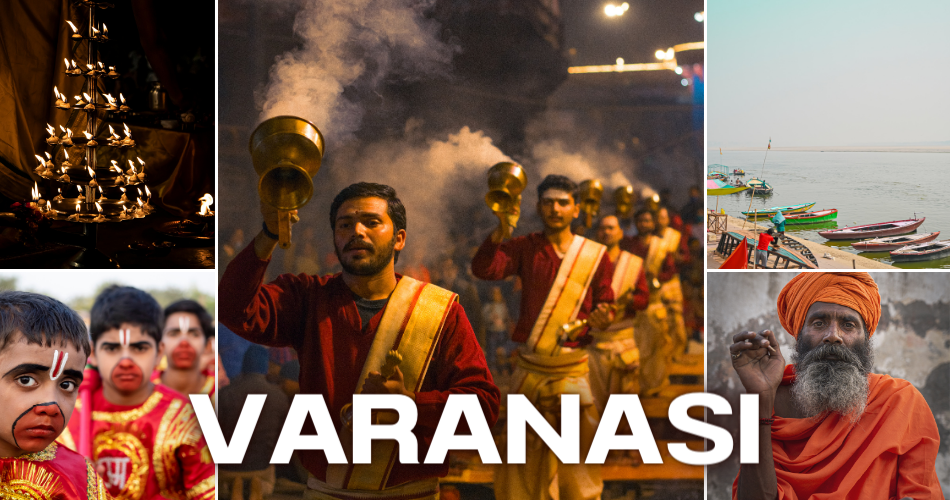
Varanasi, also known as Benares or Kashi, is often referred to as “The Oldest Living City in the World” due to its continuous inhabitation and historical significance that spans thousands of years. Here are some key reasons why Varanasi holds this remarkable distinction:
Ancient Roots: Varanasi’s history can be traced back more than 3,000 years, making it one of the oldest continuously inhabited cities in the world. It is believed to have been established around 1200 BCE.
Spiritual and Religious Significance: Varanasi is one of the holiest cities in Hinduism and a major pilgrimage site. It is believed to be the abode of Lord Shiva and the Ganges River is considered sacred. Hindus from all over India and the world come to Varanasi to perform rituals, seek spiritual enlightenment, and attain moksha (liberation from the cycle of rebirth).
Cultural and Philosophical Center: Varanasi has been a hub for philosophy, spirituality, and the arts for centuries. It is associated with ancient texts such as the Vedas and the Upanishads and has been a center for scholars, philosophers, and musicians.
Ghats and Rituals: The city is famous for its numerous ghats (steps leading to the river), where various rituals and ceremonies are performed daily. The Ganga Aarti, a mesmerizing ritual performed at the Dashashwamedh Ghat, is a major attraction that draws crowds of visitors.
Preservation of Traditions: Varanasi has preserved and maintained many ancient traditions and customs, making it a living repository of India’s cultural heritage. From traditional music to handwoven textiles, the city continues to practice and pass down its cultural traditions.
Architectural Heritage: Varanasi is home to numerous temples, mosques, and historical buildings, including the Kashi Vishwanath Temple and the Alamgir Mosque. These structures showcase a blend of architectural styles from different periods in history. Influence on Indian Art and Literature: Varanasi has been a muse for artists, poets, and writers throughout history. It has inspired countless works of art, literature, and music that continue to be celebrated today.
The Circle of Life and Death: Varanasi is also known for its role in the Hindu cycle of life and death. The city’s cremation ghats, such as Manikarnika Ghat and Harishchandra Ghat, are where Hindus believe the departed souls achieve liberation. This aspect of Varanasi’s culture underscores its enduring spiritual significance.
Varanasi’s status as the oldest living city in the world is a testament to its enduring cultural, religious, and historical importance. It remains a vibrant and dynamic city where ancient traditions and modern life coexist, attracting visitors and pilgrims from all corners of the globe.
Hampi – The Ruined Capital of the Vijayanagara Empire
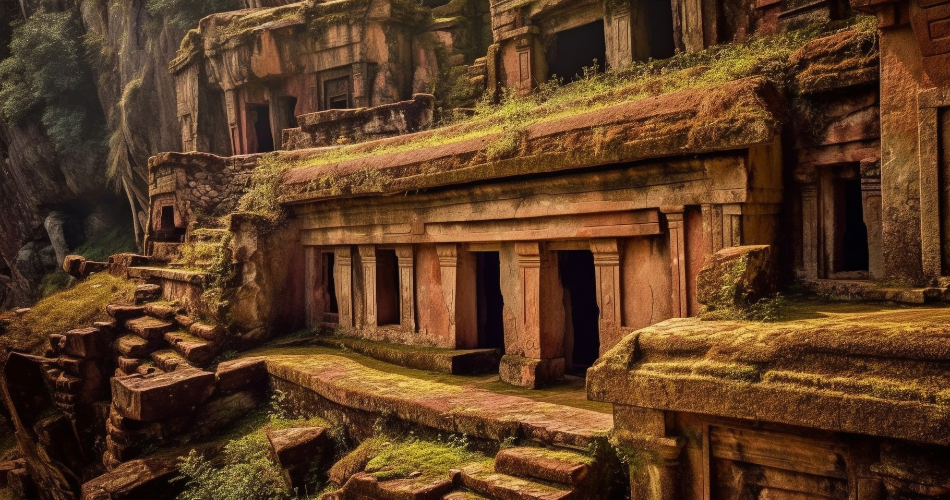
Hampi, located in the southern state of Karnataka, India, is a UNESCO World Heritage Site and the site of the ruined capital of the Vijayanagara Empire. This historic city, once a flourishing metropolis, is renowned for its spectacular architecture, rich history, and unique landscape. Here are some key points about Hampi, the ruined capital of the Vijayanagara Empire:
Historical Significance: Hampi was the capital of the Vijayanagara Empire, one of the most powerful and prosperous Hindu empires in Indian history. The empire thrived from the 14th to the 16th century, with Hampi as its political and cultural center.
Architectural Marvels: The ruins of Hampi are known for their remarkable architecture and intricate design. The city was adorned with grand temples, palaces, markets, and more. Some of the most famous structures include the Virupaksha Temple, Vittala Temple, and the Lotus Mahal.
Virupaksha Temple: The Virupaksha Temple is one of the oldest functioning temples in India and is dedicated to Lord Shiva. It is known for its impressive 160-foot tall gopuram (tower) and intricate sculptures.
Vittala Temple: The Vittala Temple is renowned for its stunning stone chariot, which is often considered an iconic symbol of Hampi. The temple also features the world-famous musical pillars that emit musical tones when struck.
Lotus Mahal: The Lotus Mahal is an elegant two-story pavilion with domed structures and arched windows. Its architecture is a blend of Hindu and Islamic styles, showcasing the diverse cultural influences present in Vijayanagara.
Elephant Stables: The Elephant Stables are a series of large, well-preserved domed chambers that were once used to house the royal elephants of the Vijayanagara rulers.
Hampi’s Bazaars: The city had vibrant markets and bazaars that sold a wide range of goods, including gemstones, textiles, and spices. The remnants of these market areas provide insights into the economic activities of the time.
Natural Beauty: In addition to its architectural wonders, Hampi is set amidst a unique landscape of granite boulders and rocky outcrops. The Tungabhadra River flows through the region, enhancing its scenic beauty.
Destruction and Abandonment: Hampi was sacked and plundered by invaders in 1565, leading to the decline of the Vijayanagara Empire. The city was abandoned, and its once-magnificent structures fell into ruins.
UNESCO World Heritage Site: In recognition of its historical and architectural significance, Hampi was designated a UNESCO World Heritage Site in 1986, ensuring its preservation and conservation.
Today, Hampi attracts tourists, historians, archaeologists, and architecture enthusiasts from around the world. Its stunning ruins, vivid history, and unique landscape make it a captivating destination that offers a glimpse into the grandeur of the Vijayanagara Empire and the vibrant culture of ancient India.
Jaipur – The Pink City and a Royal Legacy
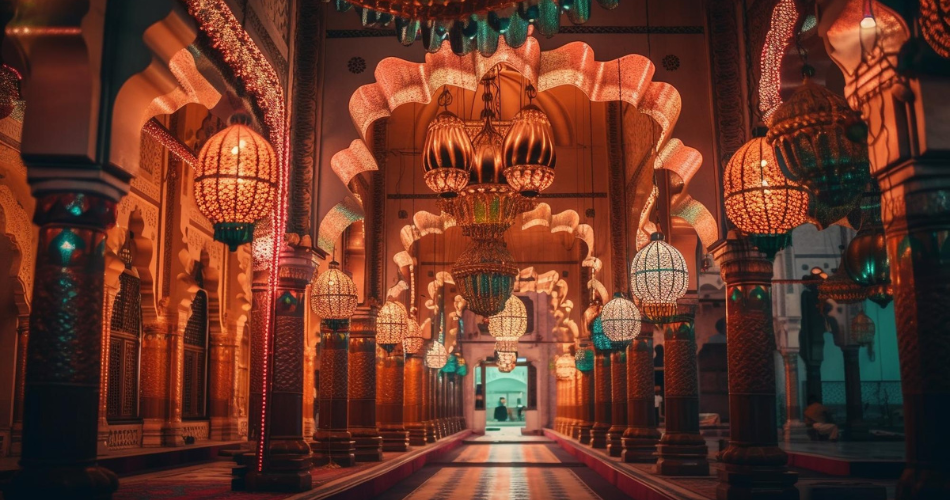
Jaipur, often referred to as the “Pink City,” is the capital of the northwestern Indian state of Rajasthan. It is renowned for its rich history, royal heritage, and distinctive architecture. Here’s a closer look at Jaipur’s status as the Pink City and its royal legacy:
The Pink City:
Jaipur earned its nickname, the “Pink City,” in 1876 when Maharaja Sawai Ram Singh II ordered the city to be painted pink to welcome the Prince of Wales and distinguish it from other Indian cities.
The tradition of painting buildings pink continues today, with many structures in the historic part of the city maintaining this distinctive hue.
The pink color symbolizes hospitality and is an integral part of Jaipur’s identity.
Royal Legacy:
Jaipur is the capital of Rajasthan and was founded by Maharaja Sawai Jai Singh II in 1727. The city was designed according to the principles of Vastu Shastra (traditional Hindu architecture) and was laid out in a grid pattern with wide streets and uniform facades.
The city served as the political and cultural center of the Kachwaha Rajput dynasty, who ruled the region for centuries.
The royal family of Jaipur, known as the Kachwahas, still resides in the City Palace, and they continue to play a significant role in the cultural and social life of the city.
City Palace:
The City Palace in Jaipur is a magnificent royal residence that reflects the fusion of Rajput and Mughal architectural styles. It is one of the most iconic landmarks in the city.
The palace complex includes museums, courtyards, gardens, and the Chandra Mahal and Mubarak Mahal, which offer a glimpse into the opulent lifestyle of the erstwhile royal family.
Hawa Mahal (Palace of Winds):
Hawa Mahal is a stunning architectural marvel with its honeycomb-like facade adorned with numerous windows (jharokhas). It was built for the royal women to observe street festivities while remaining hidden from public view.
Amer Fort:
Located just outside Jaipur, Amer Fort is a grand hilltop fortress that showcases the architectural prowess of the Kachwaha dynasty. It features impressive gates, palaces, and a beautiful Sheesh Mahal (Palace of Mirrors).
Jantar Mantar:
Jaipur is home to the Jantar Mantar, an astronomical observatory built by Maharaja Sawai Jai Singh II. It is a UNESCO World Heritage Site and houses various astronomical instruments.
Culture and Festivals:
Jaipur is known for its vibrant culture, with traditional music, dance, and crafts being an integral part of daily life.
The city hosts numerous festivals, including Diwali, Holi, and the world-famous Jaipur Literature Festival.
Handicrafts and Textiles:
Jaipur is renowned for its exquisite handicrafts, including block printing, blue pottery, jewelry, and textiles. Visitors can explore local markets and bazaars to purchase these unique products.
Jaipur’s status as the Pink City and its royal legacy make it a captivating destination for travelers looking to immerse themselves in India’s rich history, culture, and architectural heritage. The city’s blend of tradition and modernity, along with its warm hospitality, continues to attract visitors from around the world.
Khajuraho – A UNESCO World Heritage Site with Exquisite Temples
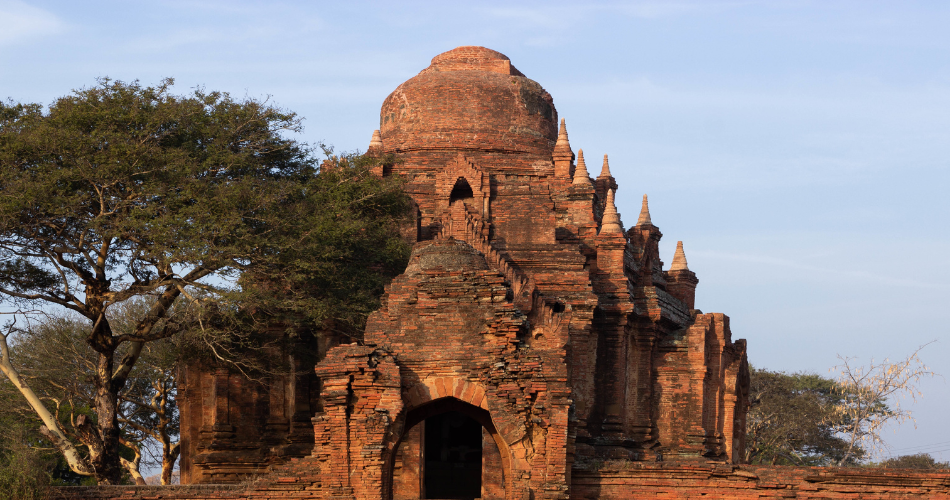
Khajuraho is a small town located in the Chhatarpur district of Madhya Pradesh, India. It is famous for its group of stunning temples adorned with intricate and explicit erotic sculptures, which have earned it the status of a UNESCO World Heritage Site. Here’s a closer look at Khajuraho and its exquisite temples:
Historical Significance:
Khajuraho was the capital of the Chandela dynasty, which ruled over this region of central India from the 9th to the 12th centuries.
During this period, a series of magnificent temples were constructed, representing a unique blend of Hindu and Jain architectural styles.
Architectural Splendor:
The Khajuraho Group of Monuments comprises a total of 22 temples, though originally there were over 80 temples in the area. These temples are divided into three groups: Western, Eastern, and Southern.
The temples are known for their exquisite and highly detailed sculptures, which depict various aspects of life, mythology, and erotica.
The intricate carvings on the temple walls showcase the remarkable artistic and architectural skills of the Chandela craftsmen.
Erotic Sculptures:
While the erotic sculptures at Khajuraho are what the temples are often famous for, they represent only a small portion of the overall carvings.
The erotic art is believed to symbolize the celebration of love, life, and the spiritual union of male and female energies.
Kandariya Mahadeva Temple:
The Kandariya Mahadeva Temple is one of the most celebrated and largest temples in Khajuraho. It is dedicated to Lord Shiva and features a towering shikhara (spire) adorned with intricate carvings.
The inner sanctum of the temple houses a Lingam, the symbol of Lord Shiva.
Lakshmana Temple:
The Lakshmana Temple is another prominent temple in Khajuraho. It is dedicated to Lord Vishnu and is known for its well-preserved sculptures and exquisite architecture.
Jain Temples:
In addition to Hindu temples, Khajuraho also has a group of Jain temples, notable for their simplicity and elegance. These temples are dedicated to the Jain Tirthankaras.
UNESCO World Heritage Site:
In 1986, Khajuraho was designated as a UNESCO World Heritage Site in recognition of its exceptional cultural and historical significance.
The temples have been meticulously preserved and restored to ensure their survival for future generations.
Festival of Dance:
Khajuraho hosts the Khajuraho Dance Festival, an annual cultural event that celebrates classical Indian dance forms like Kathak, Bharatanatyam, Odissi, and more.
This festival attracts renowned dancers and artists from across India.
Khajuraho’s temples are not only a testament to the architectural and artistic brilliance of ancient India but also provide a window into the cultural and religious life of the Chandela dynasty. These exquisite temples continue to be a source of wonder and fascination for visitors, art enthusiasts, and historians from around the world.
Ellora Caves – A Marvelous Rock-Cut Cave Complex
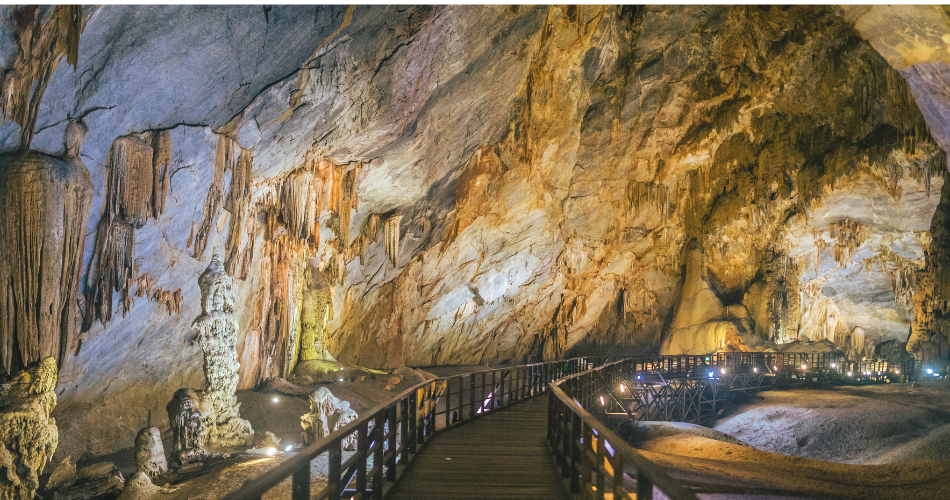
The Ellora Caves, located in the Aurangabad district of Maharashtra, India, are a remarkable complex of rock-cut cave temples and monasteries that showcase India’s rich heritage of art, architecture, and spirituality. These caves, designated as a UNESCO World Heritage Site, are renowned for their historical and artistic significance. Here’s an overview of the Ellora Caves:
Historical Background:
The Ellora Caves date back to a period spanning from the 6th to the 10th century CE, making them one of the most extensive and diverse rock-cut cave complexes in the world.
The caves were created during the rule of various dynasties, including the Rashtrakutas, Chalukyas, and Yadavas, and they represent a convergence of Hinduism, Buddhism, and Jainism.
Architecture and Layout:
Ellora comprises a total of 34 caves, each with its unique architectural style, religious affiliation, and purpose. These caves are carved into the Charanandri Hills.
The caves are grouped into three primary sections: Hindu (caves 13 to 29), Buddhist (caves 1 to 12), and Jain (caves 30 to 34).
The Kailasa Temple (Cave 16) is particularly notable. It is dedicated to Lord Shiva and is a monolithic marvel, carved from a single massive rock, resembling the sacred Mount Kailash.
Hindu Caves:
The Hindu caves at Ellora feature elaborately carved sculptures and reliefs that depict scenes from Hindu mythology. Cave 14, known as the Ravana-ka-Khai, is dedicated to Lord Shiva and showcases his various forms.
Buddhist Caves:
The Buddhist caves include Viharas (monastic dwellings) and Chaityas (prayer halls). Cave 10, known as the Vishvakarma Cave, is a particularly significant example of Mahayana Buddhist architecture.
Jain Caves:
The Jain caves at Ellora are characterized by intricately carved pillars, statues, and detailed depictions of Jain Tirthankaras. Cave 32, the Indra Sabha, is the most famous Jain cave.
Artistic Heritage:
Ellora’s sculptures and artwork depict a wide range of themes, from epic tales of Hindu deities to the serene figures of Buddha and the asceticism of Jain monks.
The artistic styles vary, showcasing the mastery of artists and artisans who worked over centuries.
Religious Tolerance and Harmony:
The coexistence of Hindu, Buddhist, and Jain cave complexes at Ellora exemplifies the spirit of religious tolerance and harmony that has been a part of India’s cultural heritage for millennia.
UNESCO World Heritage Site:
Ellora Caves were designated as a UNESCO World Heritage Site in 1983 in recognition of their outstanding universal value and cultural significance.
The Ellora Caves are a testament to the exceptional craftsmanship and creativity of ancient India. They continue to draw scholars, archaeologists, art enthusiasts, and spiritual seekers from around the world, offering a unique opportunity to explore the country’s religious and artistic diversity within a single, awe-inspiring site.
Udaipur – The Venice of the East with Palaces and Lakes
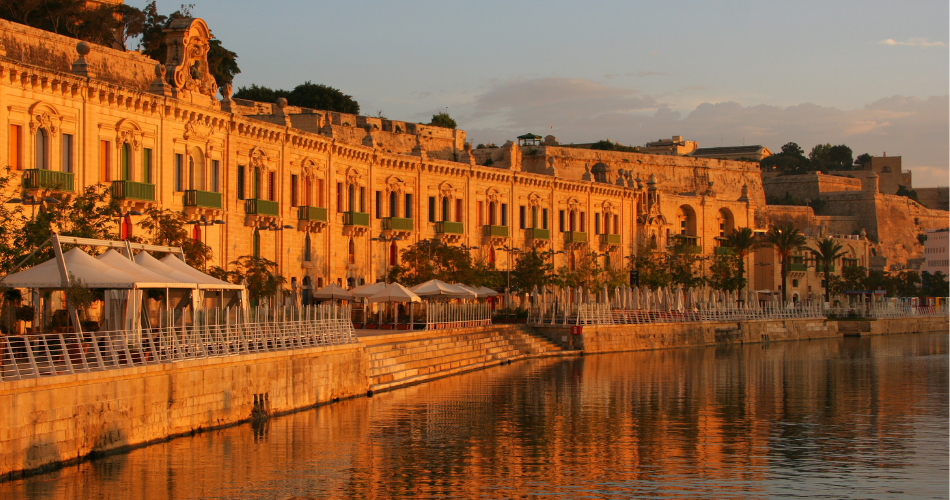
Udaipur, often referred to as the “Venice of the East,” is a captivating city located in the Indian state of Rajasthan. It is renowned for its enchanting lakes, magnificent palaces, and romantic ambiance that make it one of the most picturesque and romantic destinations in India. Here’s a closer look at Udaipur’s beauty and its royal heritage:
City of Lakes:
Udaipur is famously known as the “City of Lakes” due to its numerous interconnected lakes, with Lake Pichola being the most famous and iconic.
The city’s scenic beauty is heightened by the serene lakes, lush hills, and grand architecture that surrounds them.
Palaces and Architecture:
Udaipur is home to a plethora of magnificent palaces and architectural marvels. The City Palace, perched on the banks of Lake Pichola, is the largest palace complex in Rajasthan and offers breathtaking views of the lake and the city.
The Lake Palace, or Jag Niwas, is a stunning white marble palace located in the middle of Lake Pichola. It has been converted into a luxurious hotel and is known for its romantic ambiance.
Other notable palaces include the Jag Mandir, Fateh Prakash Palace, and Saheliyon-ki-Bari.
Cultural Heritage:
Udaipur’s cultural heritage is deeply rooted in the royal traditions of the Mewar dynasty. The city is known for its vibrant music, dance, and art scenes.
The Mewar Festival celebrated with great enthusiasm, showcases the city’s rich cultural traditions.
Jagdish Temple:
The Jagdish Temple, dedicated to Lord Vishnu, is a major religious site and a fine example of Indo-Aryan architecture. It features intricate carvings and is a significant pilgrimage spot.
Gardens and Parks:
Udaipur boasts several well-maintained gardens and parks, such as Saheliyon-ki-Bari and Gulab Bagh (Rose Garden), providing tranquil spots for relaxation.
Boat Rides on Lake Pichola:
A boat ride on Lake Pichola is a must-do activity in Udaipur. It offers a unique perspective of the city and its stunning palaces, especially during sunset.
Sunset Views:
Udaipur’s picturesque lakes and hills provide some of the most mesmerizing sunset views in India. Sunset boat rides on Lake Pichola or a visit to the Monsoon Palace are popular choices for experiencing this beauty.
Art and Craft:
Udaipur is renowned for its traditional arts and crafts, including miniature paintings, Rajasthani textiles, and intricately designed jewelry. The city’s markets are ideal places to shop for these handicrafts.
Lake Festivals:
Udaipur hosts various cultural events and festivals throughout the year, including the Udaipur World Music Festival and the Shilpgram Arts and Crafts Fair.
Udaipur’s unique blend of natural beauty, architectural grandeur, and cultural richness makes it a favorite destination for travelers seeking a romantic and culturally immersive experience. Its serene lakes, royal palaces, and vibrant traditions continue to capture the hearts of visitors from around the world, earning it the title of the “Venice of the East.”
Agra – Home to the Iconic Taj Mahal
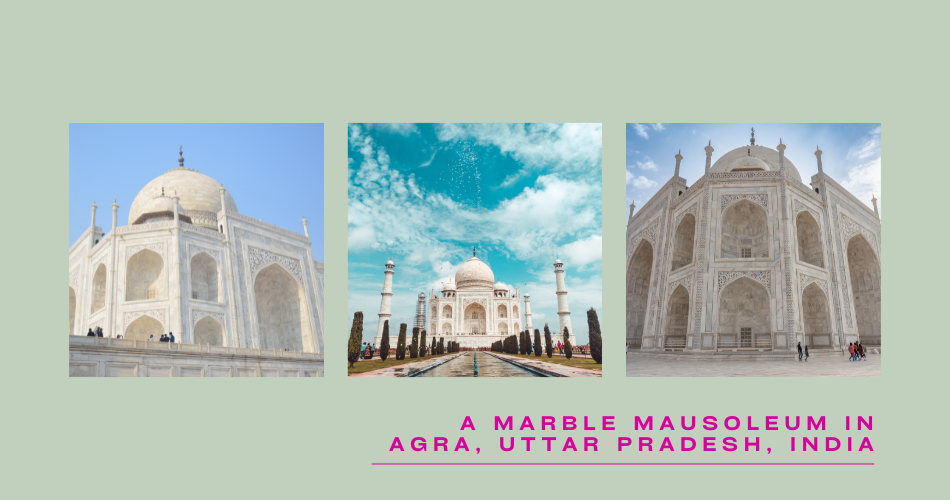
Agra, located in the northern Indian state of Uttar Pradesh, is one of the most iconic and historically significant cities in India. It is renowned worldwide as the home of the majestic Taj Mahal, a UNESCO World Heritage Site, and one of the most famous landmarks on the planet. Here is a closer look at Agra and its cultural heritage, with a particular focus on the Taj Mahal:
Taj Mahal:
The Taj Mahal is perhaps the most famous and recognizable symbol of India. It is a breathtaking white marble mausoleum built by the Mughal emperor Shah Jahan in memory of his beloved wife, Mumtaz Mahal, who passed away during childbirth.
Completed in 1653, the Taj Mahal is renowned for its architectural perfection, intricate carvings, and the use of semi-precious stones in its inlay work. It is often referred to as the “Crown of Palaces.”
The monument’s design combines elements of Persian, Islamic, and Indian architectural styles, making it a masterpiece of Mughal architecture.
The Taj Mahal is not just an architectural marvel but also a symbol of eternal love, and it attracts millions of visitors from around the world.
Agra Fort:
Agra Fort, also known as the Red Fort of Agra, is another UNESCO World Heritage Site and a historic fortress that served as the main residence of the Mughal emperors for generations.
The fort’s imposing walls and intricate palaces, such as the Jahangir Palace and the Khas Mahal, offer insights into the opulent lifestyle of the Mughal rulers.
Fatehpur Sikri:
Located a short distance from Agra, Fatehpur Sikri is a historical city built by Emperor Akbar. It served as the Mughal capital for a brief period.
The city features impressive architecture, including the Buland Darwaza (Gate of Victory) and the Jama Masjid, both of which showcase a blend of Persian and Indian architectural styles.
Akbar’s Tomb:
The tomb of Emperor Akbar, known as Sikandra, is an architectural marvel and a serene monument set in a beautiful garden.
Cultural Heritage:
Agra has a rich cultural heritage, with a strong influence of Mughal art, music, and cuisine. Traditional Mughlai cuisine, including dishes like biryani and kebabs, is a highlight for food enthusiasts.
Marble and Handicrafts:
Agra is famous for its marble inlay work, and visitors can witness skilled artisans crafting exquisite pieces of art in the city’s markets.
The city is also known for its fine handicrafts, including leather goods and textiles.
UNESCO City of Crafts and Folk Art:
In 2019, Agra was designated as a UNESCO City of Crafts and Folk Art, recognizing its rich heritage of traditional craftsmanship.
Agra’s cultural legacy, combined with the grandeur of the Taj Mahal and other historical monuments, makes it a must-visit destination for travelers seeking to explore India’s history, art, and architectural marvels. The city’s historical treasures continue to captivate and inspire visitors from around the world.
Madurai – The City of Temples
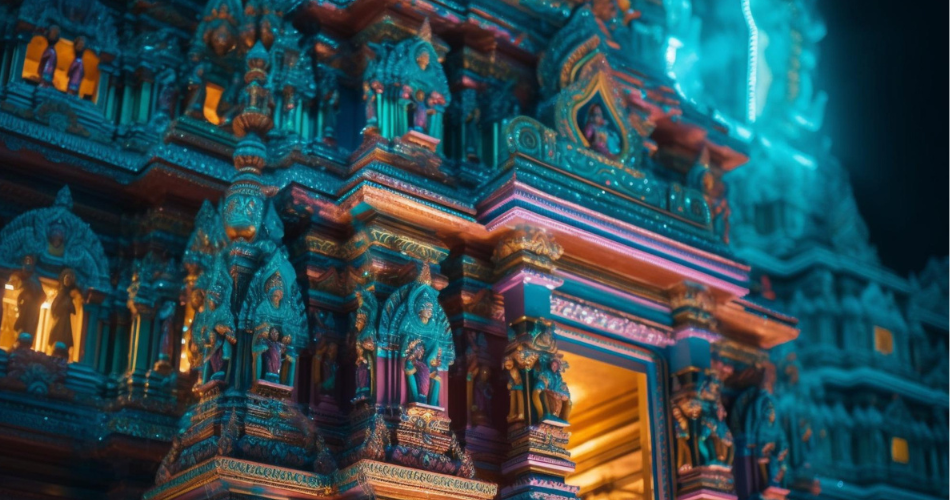
Madurai, located in the southern Indian state of Tamil Nadu, is often referred to as the “City of Temples” due to its rich and ancient religious heritage. It is one of the oldest continuously inhabited cities in the world and boasts a history and culture deeply intertwined with its temple architecture and traditions. Here’s a closer look at Madurai and its significance as the “City of Temples”:
Meenakshi Amman Temple:
The Meenakshi Amman Temple is the crown jewel of Madurai and one of the most famous temples in India. It is dedicated to Goddess Meenakshi (an avatar of Parvati) and her consort Lord Sundareswarar (an avatar of Shiva).
The temple complex is known for its stunning architecture, towering gopurams (pyramidal entrance towers), and intricate sculptures that depict scenes from Hindu mythology.
The Hall of Thousand Pillars within the temple is a marvel of architecture and artistry, featuring intricately carved pillars.
Religious Significance:
Madurai has been a center of Tamil culture and religion for over 2,500 years. The city is mentioned in ancient Tamil literature, and its temples are integral to the religious and cultural life of the region.
The annual Chithirai Festival at the Meenakshi Temple, celebrating the divine wedding of Meenakshi and Sundareswarar, attracts thousands of devotees and tourists.
Koodal Azhagar Temple:
Another significant temple in Madurai is the Koodal Azhagar Temple, dedicated to Lord Vishnu. It is known for its architectural beauty and intricate sculptures.
Thirumalai Nayakkar Palace:
This historical palace was built in the 17th century by King Thirumalai Nayak. It showcases a blend of Dravidian and Islamic architectural styles and hosts sound and light shows in the evenings.
Azhagar Kovil:
Located on the outskirts of Madurai, Azhagar Kovil is dedicated to Lord Vishnu and is set amidst picturesque surroundings.
Alagar Festival:
The Alagar Festival, also known as the Chithirai Thiruvizha, is a significant annual event in Madurai where the deity Lord Alagar is taken in a grand procession to the Meenakshi Temple.
Art and Culture:
Madurai is known for its rich tradition of classical Tamil music, dance, and literature.
The city is a center for Tamil film and television production.
Food:
Madurai’s culinary culture is famous for its South Indian flavors, including idli, dosa, and a variety of spicy Chettinad dishes.
Madurai’s temples, with their architectural grandeur and religious fervor, make the city a unique destination for spiritual seekers, history enthusiasts, and cultural explorers. The “City of Temples” remains a vibrant center of Tamil culture and tradition, welcoming visitors to experience its rich heritage.
Kolkata – The Cultural Capital of India
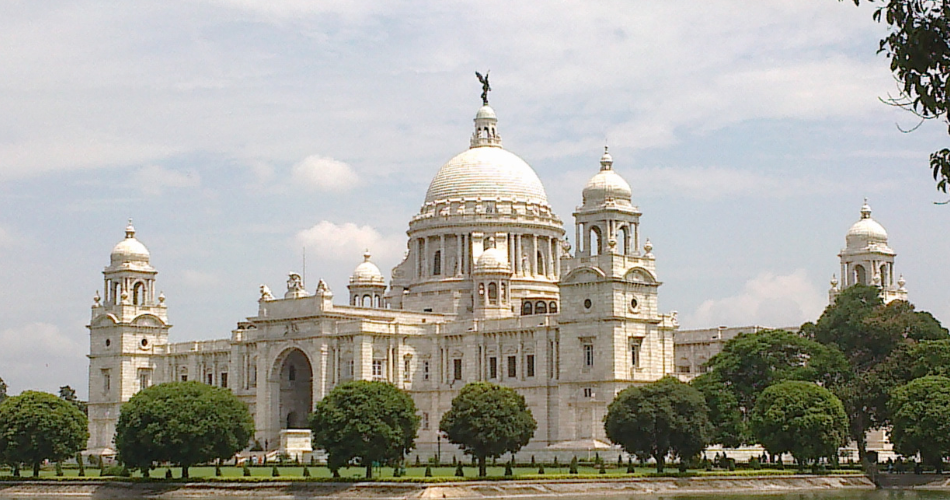
Kolkata, the capital city of the Indian state of West Bengal, is often referred to as the “Cultural Capital of India.” This vibrant and historically rich city has played a pivotal role in shaping India’s cultural, literary, artistic, and intellectual heritage. Here are some key aspects that contribute to Kolkata’s status as the Cultural Capital of India:
Literature and Intellectual Legacy:
Kolkata has been the intellectual hub of India for centuries. It was home to renowned writers and thinkers like Rabindranath Tagore, the first Asian Nobel laureate in Literature, and Swami Vivekananda, a key figure in the introduction of Indian philosophies of Vedanta and Yoga to the Western world.
The city has a long tradition of literature and is famous for its association with literary giants like Bankim Chandra Chattopadhyay, Sarat Chandra Chattopadhyay, and many others.
The Kolkata International Film Festival and the Kolkata Book Fair are major events that celebrate literature, cinema, and intellectual discourse.
Art and Culture:
Kolkata is a hub of classical arts, with a thriving cultural scene. It is known for its traditional dance forms like Kathak, Odissi, and Bharatanatyam.
The city has numerous art galleries and cultural centers, such as the Academy of Fine Arts and the Indian Museum, where art and heritage are preserved and promoted.
Music and Performing Arts:
Kolkata is famous for its musical heritage, especially classical and Rabindra Sangeet (songs composed by Rabindranath Tagore). The city hosts numerous music festivals and concerts throughout the year.
The Kolkata Film Festival and theaters like Nandan showcase a wide range of national and international cinema.
Drama and Theater:
The city has a vibrant theater culture, with the historic Minerva Theatre being one of the oldest functioning theaters in India.
The Kolkata International Film Festival and theaters like Nandan showcase a wide range of national and international cinema.
Festivals and Celebrations:
Kolkata is known for its grand celebration of festivals like Durga Puja, which is the city’s most significant cultural and religious event. The city comes alive with artistic displays, elaborate decorations, and processions during this time.
Other festivals, such as Diwali and Eid, are celebrated with equal enthusiasm, reflecting the city’s diversity and cultural tolerance.
Educational Institutions:
Kolkata is home to prestigious educational institutions like the University of Calcutta, Jadavpur University, and the Indian Statistical Institute, which has produced many scholars and leaders in various fields.
Cuisine:
Kolkata offers a diverse culinary landscape, with a rich tradition of Bengali cuisine, known for its sweets (like rasgulla and Sandesh) and seafood delicacies.
Heritage Architecture:
The city boasts colonial-era architecture, including Victoria Memorial, Marble Palace, and St. Paul’s Cathedral, which add to its cultural charm.
Kolkata’s unique blend of intellectualism, artistic expression, literary contributions, and cultural diversity have earned it the title of the “Cultural Capital of India.” It continues to inspire and nurture creativity, making it a significant cultural hub in the country.
Amritsar – The Spiritual Center of Sikhism
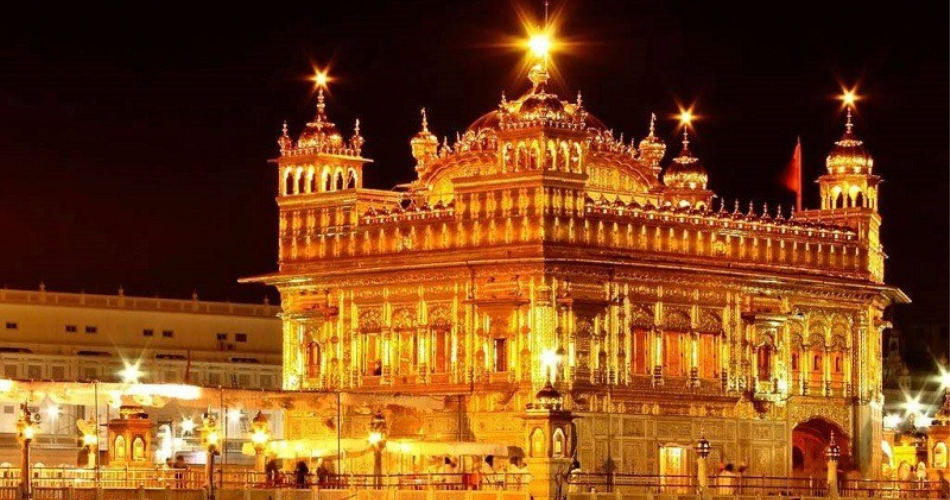
Amritsar, located in the northwestern Indian state of Punjab, is one of the most significant religious and cultural centers in India, particularly for the Sikh community. It is often referred to as the “Spiritual Center of Sikhism” due to its association with the Golden Temple (Harmandir Sahib), the holiest and most revered place of worship for Sikhs. Here’s a closer look at Amritsar’s significance as the spiritual center of Sikhism:
Golden Temple (Harmandir Sahib):
The Golden Temple is the most iconic and sacred shrine in Sikhism. It is a stunning architectural marvel, with its central structure covered in shimmering gold leaf.
The temple is situated in the middle of a sacred pool known as the “Amrit Sarovar,” from which Amritsar derives its name. Pilgrims come from all over the world to pay their respects and seek spiritual solace at the Golden Temple.
The Akal Takht, a significant religious institution, is located within the Golden Temple complex. It serves as the highest seat of religious and temporal authority for Sikhs.
Sikh History and Heritage:
Amritsar holds a pivotal place in Sikh history. It was founded by Guru Ram Das, the fourth Guru of Sikhism, and later expanded by Guru Arjan Dev, the fifth Guru, who constructed the Golden Temple.
The city is a repository of Sikh heritage, and its numerous historical sites, museums, and monuments, such as the Central Sikh Museum and the Ramgarhia Bunga, provide insights into Sikh history and culture.
Langar (Community Kitchen):
The Golden Temple is renowned for its langar, a free community kitchen that serves meals to thousands of people every day, regardless of their religion, caste, or creed. This practice embodies the Sikh principle of selfless service and equality.
Wagah Border Ceremony:
Amritsar is also known for its close proximity to the Wagah Border, the border between India and Pakistan. The daily Wagah Border Ceremony, marked by elaborate drills and flag-lowering rituals, is a popular attraction that draws visitors from both countries.
Durgiana Temple:
The Durgiana Temple, often referred to as the “Silver Temple” for its silver doors, is another significant religious site in Amritsar. It is dedicated to Goddess Durga and showcases impressive architecture and religious fervor.
Cultural Richness:
Amritsar’s culture is deeply intertwined with Sikh traditions, and the city is known for its vibrant celebrations during Sikh festivals, including Guru Nanak Jayanti and Vaisakhi.
The city is also famous for its traditional Punjabi cuisine, which includes dishes like Amritsari kulcha and butter chicken.
Jallianwala Bagh:
Jallianwala Bagh, a historic garden, is a somber reminder of a tragic incident in Indian history. It is the site where British troops opened fire on a peaceful gathering in 1919, resulting in a massacre.
Amritsar’s significance as the spiritual center of Sikhism and its deep-rooted religious and cultural heritage make it a place of profound importance for Sikhs and a fascinating destination for travelers seeking to immerse themselves in the rich traditions and history of Sikhism.
Ajanta Caves – Masterpieces of Buddhist Art and Architecture
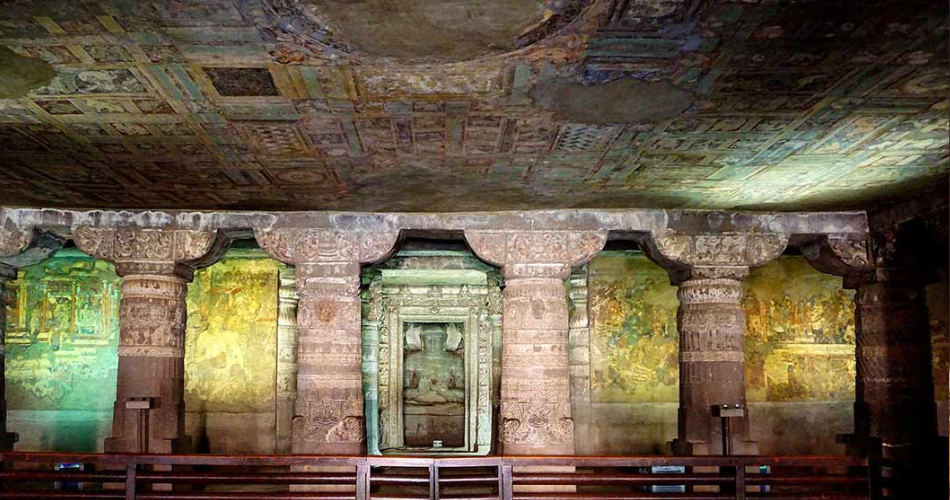
The Ajanta Caves, located in the state of Maharashtra, India, are a group of rock-cut cave complexes that house some of the finest examples of Buddhist art and architecture in the world. These caves are a UNESCO World Heritage Site and are renowned for their historical and artistic significance. Here’s an overview of the Ajanta Caves and their status as masterpieces of Buddhist art and architecture:
Historical Background:
The Ajanta Caves date back to the 2nd century BCE and continued to be excavated and adorned with art for several centuries. They are believed to have been used as monastic retreats for Buddhist monks and served as a center for learning and meditation.
Rock-Cut Architecture:
The Ajanta Caves are carved into the horseshoe-shaped rock face of a cliff along the Waghora River. The caves were meticulously carved by hand and chiseled into a sheer rock wall, showcasing the architectural and artistic skills of ancient craftsmen.
Buddhist Art and Iconography:
The caves are adorned with exquisite paintings and sculptures that depict various aspects of Buddhist life, teachings, and legends. The art within the caves reflects the evolution of Buddhist iconography.
The murals are known for their vivid colors, intricate detailing, and the use of natural pigments. They portray scenes from the life of Buddha, Jataka tales, and other Buddhist deities and themes.
The sculptures within the caves are equally impressive, with exquisite depictions of Buddha in various poses and forms.
Cave Complex:
The Ajanta Caves consist of approximately 30 rock-cut caves, including prayer halls (chaityas) and monastic cells (viharas).
Cave 1 is a chaitya hall and is among the most well-preserved and artistically significant caves in the complex.
Cave 2, known as the Vihara of King Dasharatha, is one of the largest monasteries in Ajanta.
UNESCO World Heritage Site:
The Ajanta Caves were designated as a UNESCO World Heritage Site in 1983, recognizing their outstanding universal value and cultural significance.
Preservation and Conservation:
Over the years, the caves have faced threats from natural elements, human activity, and environmental factors. Conservation efforts have been ongoing to protect and preserve these precious treasures.
Accessibility:
The Ajanta Caves are located in a remote area, making their accessibility somewhat challenging. However, they are a popular tourist destination and can be reached by road from nearby cities like Aurangabad.
The Ajanta Caves serve as a testament to the rich artistic, cultural, and spiritual heritage of ancient India and Buddhism. They continue to captivate art enthusiasts, historians, and tourists from around the world, offering a glimpse into the magnificent world of Buddhist art and architecture.
Mahabalipuram – An Ancient Port City with Historical Significance
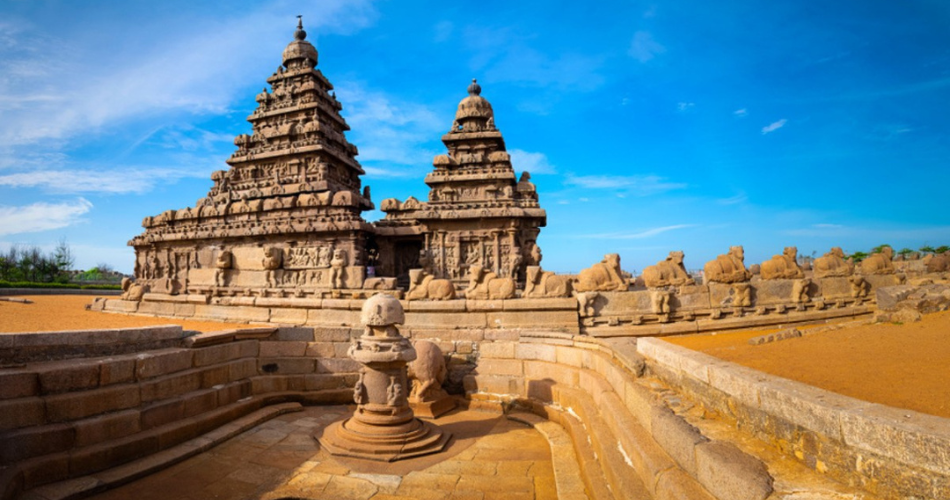
It appears you are referring to Mahabalipuram (also known as Mamallapuram), a historic town in the Indian state of Tamil Nadu. Mahabalipuram is famous for its ancient rock-cut monuments, including the iconic Shore Temple, which was built during the reign of the Pallava dynasty. Here is more information about Mahabalipuram and its historical significance:
Shore Temple:
The Shore Temple is one of the most renowned monuments in Mahabalipuram and a UNESCO World Heritage Site. It is an exquisite example of Dravidian temple architecture.
This temple, dedicated to Lord Shiva, is situated on the shores of the Bay of Bengal and was built in the 8th century during the rule of King Narasimhavarman II (also known as Rajasimha). It is believed to have served as a beacon for sailors.
Pancha Rathas:
The Pancha Rathas, also known as the Five Rathas, are a group of monolithic rock-cut temples in Mahabalipuram. Each ratha (chariot) is carved from a single granite rock and represents various architectural styles.
Arjuna’s Penance:
Arjuna’s Penance, also called the Descent of the Ganges, is a massive bas-relief sculpture carved on the face of a large rock. It depicts scenes from the Mahabharata and Hindu mythology.
Mahishasuramardini Cave:
This cave temple is renowned for its depictions of the goddess Durga slaying the demon Mahishasura. The rock-cut architecture and intricate carvings make it a significant historical site.
Krishna’s Butter Ball:
Krishna’s Butter Ball is a massive natural rock formation that appears to be balanced precariously on a sloping hillside. It has become a popular tourist attraction due to its intriguing appearance.
Historical Significance:
Mahabalipuram was a thriving port city during the Pallava dynasty, which ruled the region from the 3rd to the 9th century CE. It served as a significant center for trade and cultural exchange with other parts of Asia.
Diverse Art and Architecture:
The monuments of Mahabalipuram showcase a blend of Dravidian temple architecture, Pallava art, and maritime history. The town has played a pivotal role in preserving the artistic and architectural heritage of the region.
Modern Mahabalipuram:
Today, Mahabalipuram is a popular tourist destination, known not only for its historical significance but also for its beautiful beaches and modern resorts.
Mahabalipuram’s rock-cut monuments and temples stand as a testament to the artistic and architectural achievements of the Pallava dynasty. This historic town is a must-visit destination for those interested in India’s rich cultural and artistic heritage.
Jaisalmer – The Golden City with Magnificent Forts and Havelis
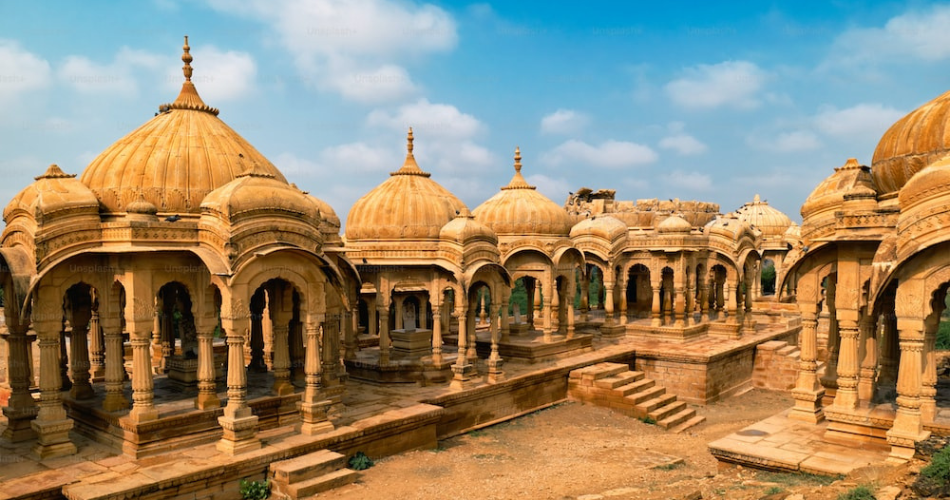
Jaisalmer, often referred to as the “Golden City,” is a stunning desert city located in the western Indian state of Rajasthan. This picturesque city is renowned for its magnificent forts, intricately designed havelis (traditional mansions), and its unique golden-yellow sandstone architecture that seems to shimmer in the desert sunlight. Here’s a closer look at Jaisalmer and its notable attractions:
Jaisalmer Fort (Sonar Qila):
The Jaisalmer Fort is one of the largest fully preserved fortified cities in the world and a UNESCO World Heritage Site. It is constructed entirely of golden-yellow sandstone and appears to rise out of the Thar Desert like a mirage.
Inside the fort, you’ll find a bustling old town with narrow winding lanes, ancient temples, and vibrant marketplaces where you can shop for traditional Rajasthani handicrafts.
Patwon Ki Haveli:
Patwon Ki Haveli is a cluster of five havelis (mansions) and is one of the most famous haveli complexes in Jaisalmer. These elaborately carved sandstone havelis showcase exquisite craftsmanship.
Salim Singh Ki Haveli:
This haveli is known for its distinctive peacock-shaped roof and beautiful balconies. It was built by Salim Singh, the prime minister of Jaisalmer during the 19th century.
Nathmal Ki Haveli:
Nathmal Ki Haveli is another architectural gem with stunning carvings. Legend has it that two different craftsmen worked on its left and right sides, resulting in a unique and asymmetrical design.
Desert Safari:
Jaisalmer’s proximity to the Thar Desert makes it a popular destination for desert safaris. Visitors can enjoy camel rides, explore sand dunes, and witness the mesmerizing sunset over the desert.
Gadsisar Lake:
Gadsisar Lake is a man-made reservoir surrounded by temples and shrines. It’s a serene spot to relax, and you can even enjoy boat rides on the lake.
Cultural Heritage:
Jaisalmer is rich in Rajasthani culture and traditions. The city hosts various cultural events and festivals, with the Desert Festival being a major attraction.
Jain Temples:
Jaisalmer is home to several Jain temples known for their intricate architecture and stunning marble carvings. The Paraswanath Temple and Chandraprabhu Temple are notable examples.
Jaisalmer Folklore Museum:
This museum showcases the rich cultural heritage of Rajasthan, with displays of traditional art, artifacts, and musical instruments.
Forts and Palaces:
Apart from Jaisalmer Fort, the city is dotted with other historic forts and palaces like the Badal Mahal, Tazia Tower, and the royal palace known as Maharaja’s Palace.
Jaisalmer’s golden-hued architecture, rich cultural heritage, and desert landscapes create a truly unique and enchanting atmosphere. It’s a destination that offers not only historical and architectural wonders but also the opportunity to experience the vibrant culture of Rajasthan in a desert setting.
Puri – The Sacred City with Jagannath Temple and Beaches
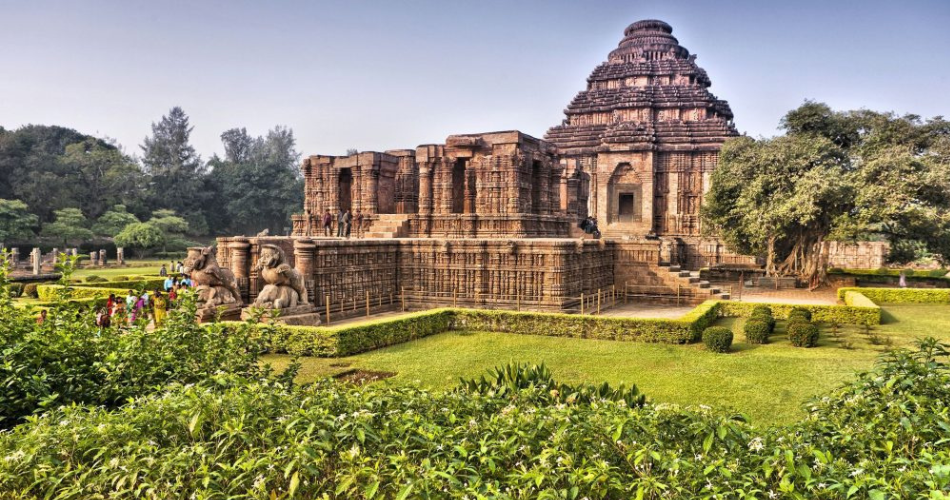
Puri, located on the eastern coast of India in the state of Odisha, is a sacred city and a popular tourist destination known for its spiritual significance, historic temples, and beautiful beaches. One of its most famous landmarks is the Jagannath Temple. Here’s a closer look at Puri:
Jagannath Temple:
The Jagannath Temple is one of the Char Dham pilgrimage sites for Hindus and is dedicated to Lord Jagannath (a form of Lord Krishna), his brother Balabhadra, and sister Subhadra.
The temple is known for its towering spire, intricate stone carvings, and the annual Rath Yatra (chariot festival) where idols of the deities are taken in grand processions on elaborately decorated chariots.
Spiritual Significance:
Puri is considered one of the holiest places in Hinduism. Devotees from all over India and beyond visit the Jagannath Temple to seek blessings and participate in religious rituals.
The temple’s kitchen, known as the Ananda Bazaar, is one of the largest in the world and serves free meals to thousands of pilgrims daily.
Puri Beach:
Puri Beach is a popular destination for both pilgrims and tourists. It’s known for its golden sands, gentle waves, and vibrant atmosphere.
Visitors can enjoy leisurely walks along the beach, engage in water sports, or simply relax and take in the views.
Sunset Views:
Puri Beach is famous for its beautiful sunsets. Watching the sun dip below the horizon in the evening is a serene and memorable experience.
Konark Sun Temple:
Located about 35 kilometers from Puri, the Konark Sun Temple is another UNESCO World Heritage Site known for its architectural brilliance and intricate stone carvings. It’s dedicated to the Sun God.
Puri Rath Yatra:
The Rath Yatra (chariot festival) in Puri is a grand spectacle and one of the most significant religious events in India. Thousands of devotees gather to witness the deities being carried on elaborately decorated chariots.
Local Handicrafts:
Puri is famous for its local handicrafts, including Pattachitra (traditional Odia paintings), stone and wood carvings, and exquisite silver filigree work.
Marine Drive:
The Marine Drive along the coastline offers a pleasant and scenic drive with views of the Bay of Bengal.
Historical and Cultural Sites:
Puri also boasts other historic temples and cultural sites, such as the Gundicha Temple, Lokanath Temple, and the Chilika Lake nearby, which is a haven for birdwatchers and nature enthusiasts.
Puri’s blend of spirituality, natural beauty, and cultural richness makes it a multifaceted destination. Whether you’re seeking a spiritual experience, relaxation on the beach, or a taste of local culture, Puri has something to offer for every traveler.
Mysore – A City of Palaces and Royalty
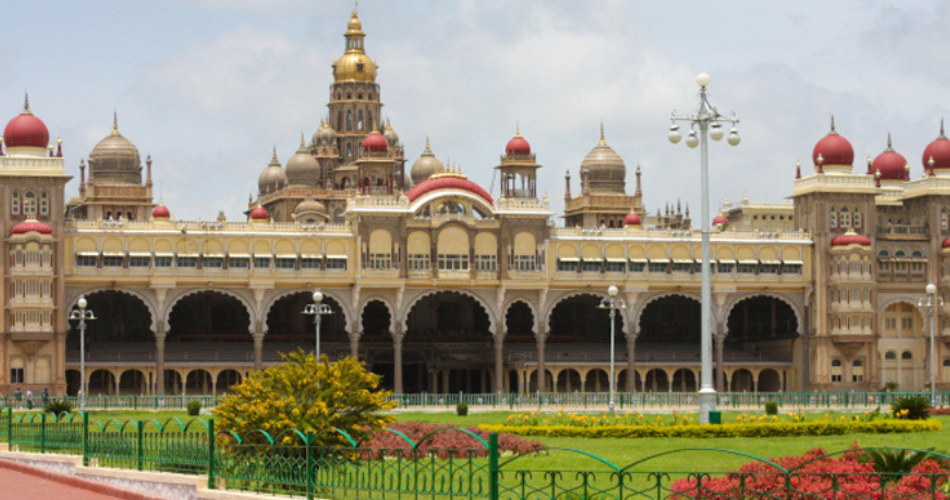
Mysore, located in the southern Indian state of Karnataka, is a city renowned for its grand palaces, rich cultural heritage, and a history steeped in royalty. It’s often referred to as the “City of Palaces” for its opulent royal residences. Here’s a closer look at Mysore and its royal legacy:
Mysore Palace (Amba Vilas Palace):
Mysore Palace is the crown jewel of the city and one of the most magnificent palaces in India. It’s a striking example of Indo-Saracenic architecture with a blend of Hindu, Islamic, and Rajput styles.
The palace served as the official residence of the Wadiyar dynasty, the erstwhile rulers of Mysore. Today, it’s a museum open to the public, showcasing the royal heritage, including artifacts, paintings, and the famed Durbar Hall.
Jaganmohan Palace:
Jaganmohan Palace, another historic palace in Mysore, now houses the Jayachamarajendra Art Gallery, which features an impressive collection of paintings, sculptures, and musical instruments.
Lalitha Mahal Palace:
The Lalitha Mahal Palace, located on a hilltop, is an exquisite heritage hotel that offers a glimpse into the opulent lifestyle of royalty.
Chamundi Hill:
Chamundi Hill is home to the Chamundeshwari Temple, dedicated to Goddess Chamundeshwari (a form of Durga). The temple offers panoramic views of Mysore from its hilltop location.
Mysore Zoo (Sri Chamarajendra Zoological Gardens):
The Mysore Zoo is one of the oldest and most well-maintained zoos in India, featuring a diverse range of animals, birds, and reptiles.
Brindavan Gardens:
Brindavan Gardens, situated adjacent to the Krishnarajasagara Dam, is known for its beautiful terraced gardens, musical fountains, and boating facilities.
St. Philomena’s Church:
St. Philomena’s Church is an imposing neo-Gothic structure with a towering spire, making it one of the largest churches in India.
Dasara Festival:
Mysore is famous for its grand Dasara festival, a 10-day celebration that honors the victory of the goddess Chamundeshwari over the demon Mahishasura. The festival includes a vibrant procession of caparisoned elephants, cultural performances, and other events.
Cultural Heritage:
Mysore has a rich cultural heritage, known for its classical music, dance, and traditional arts. The city has produced renowned artists and musicians.
Silk and Handicrafts:
Mysore is known for its silk industry, particularly Mysore silk sarees, which are famous for their quality and craftsmanship. The city is also known for its sandalwood products and other handicrafts.
Mysore’s palaces and royal history continue to captivate visitors from around the world. Its blend of historical grandeur, cultural richness, and natural beauty makes it a captivating destination for travelers seeking a taste of royalty and tradition in the heart of Karnataka.\
Conclusion: Embark on a Journey Through Time in India’s Ancient Cities
So why wait? Embark on this journey through time and discover the magic that lies within India’s ancient cities. Let their stories unfold before your eyes as you delve into their captivating beauty and unravel centuries-old mysteries. Your travel experience will be one filled with wonderment and appreciation for the wonders that lie within these extraordinary destinations.
